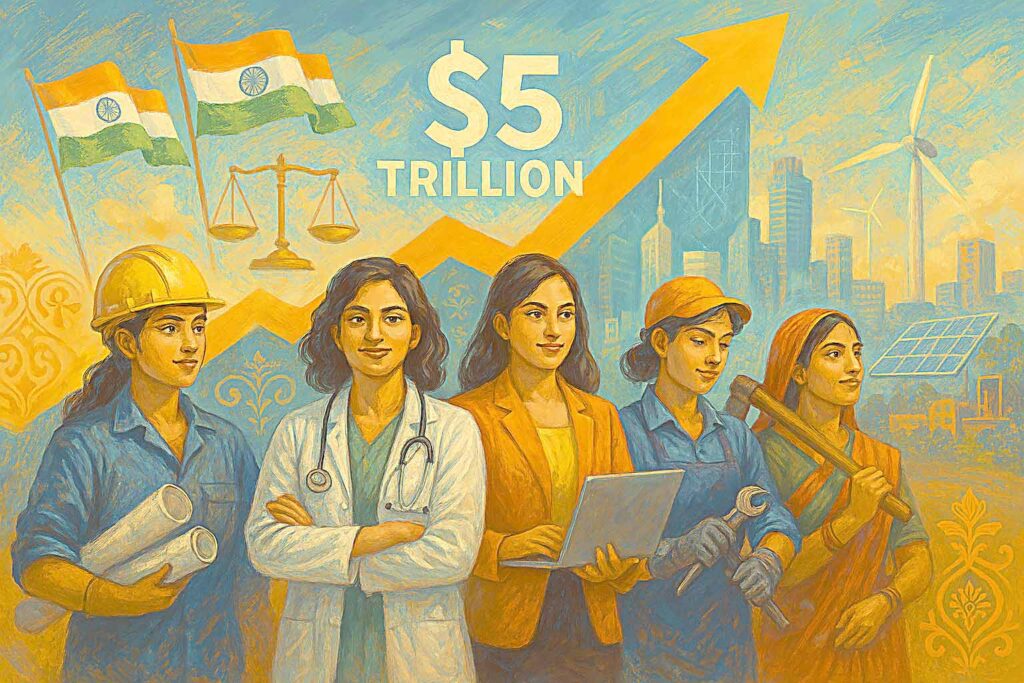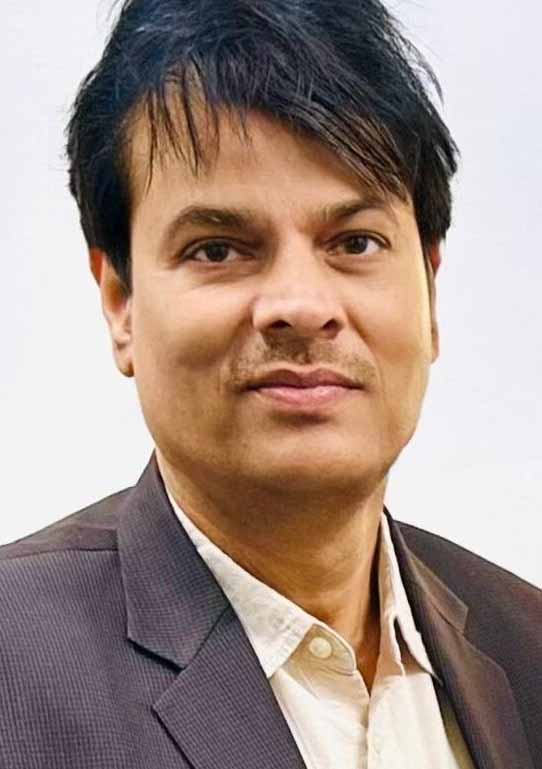Accelerate Women’s Entrepreneurship in India to Build a 5 Trillion $ Economy

India needs 400 million more women in workforce to contribute USD 14 trillion to economy:
How to Accelerate Women’s Entrepreneurship in India to Build a 5 Trillion Dollar Economy
- P K JHA National MSME expert E Executive Director (NSIC) Ministry of MSME (Govt of India)
New Delhi, More women in workforce is key to India becoming a $5 trillion economy Despite recent economic advances, India’s gender balance in the economic domain is among the lowest in the world. Reducing gender disparities has emerged as a key driver for inclusive economic growth over the last century.
The Indian workforce currently consists of less than 40 million women in comparison to over 360 million men, and women are paid less even when they perform equal-value jobs as men. Women have the highest incidence of poverty, the worst health conditions, and an elevated risk of violence. Despite India’s status as the world’s most populous country, women’s representation in leadership roles remains glaringly inadequate.

Gender disparities are rampant across states and industries. While some southern states, like Karnataka, Kerala, and Tamil Nadu, show an improving trend in gender equality, substantial disparities persist in states like Bihar, UP, Haryana, and Gujarat. Notably, the divide is more pronounced within the services sector compared to manufacturing.
We have failed in pulling women into the workforce! What can we do right to achieve $5 trn economy?
Increasing female labor force participation has proven to be a game-changer for economic growth in several countries. Nations that have successfully integrated more women into the workforce have seen higher productivity, improved household incomes, and overall economic expansion.
Challenges Facing Women in the Workforce
Historically, India’s Female Labor Force Participation Rate (FLFPR) has been declining, from 39.7% in 2004-05 to 22.9% in 2017-18, before showing a recent increase. While this upward trend is encouraging, India still lags behind its global peers, making it imperative to address systemic barriers that continue to limit women’s workforce participation.
Challenges Facing Women in the Workforce
Historically, India’s Female Labor Force Participation Rate (FLFPR) has been declining, from 39.7% in 2004-05 to 22.9% in 2017-18, before showing a recent increase. While this upward trend is encouraging, India still lags behind its global peers, making it imperative to address systemic barriers that continue to limit women’s workforce participation.
Several barriers to entry further hinder women’s participation. Traditional societal norms continue to restrict women’s mobility and career choices. The lack of childcare facilities is a major concern, and 43.04% of women cited household responsibilities as a key barrier to employment.
Wage disparities persist, with women earning significantly less than men for the same roles, discouraging workforce participation. Additionally, limited access to skill development poses a challenge, as informal training fails to translate into better wages compared to formal education. Addressing these critical gaps is essential for unlocking the full potential of India’s female workforce and accelerating economic growth.
Economic Benefits of Increased Female Participation
Increasing female labor force participation has proven to be a game-changer for economic growth in several countries. Nations that have successfully integrated more women into the workforce have seen higher productivity, improved household incomes, and overall economic expansion.
For instance, Brazil made significant investments in childcare and education, which played a crucial role in enabling women to enter and stay in the workforce. By reducing the burden of unpaid domestic responsibilities, women were able to access stable jobs, boosting overall employment rates and economic output.
Sweden, on the other hand, introduced gender-friendly policies, including paid parental leave, workplace safety regulations, and flexible work arrangements, ensuring that women could balance professional and personal responsibilities without dropping out of the workforce. As a result, Sweden has one of the highest female labor force participation rates in the world. Similarly, Nepal focused on microfinance and women-led enterprises, allowing women—especially in rural areas—to gain financial independence through small businesses. By making credit accessible, Nepal saw a steady increase in female employment, particularly in sectors like agriculture, textiles, and retail.
Since the revised MSME definition in July 2020, 2,20,73,675 women-owned MSMEs have been registered on the Udyam Registration Portal (URP) and Udyam Assist Platform (UAP) as of November 30, 2024. This surge highlights the growing role of women entrepreneurs in India’s economy. Financial support through PM Mudra Yojana and rising women-led startups are further driving innovation, job creation, and economic growth.
Strategies to Enhance Female Participation
Policy Initiatives Expanding education and skill development programs is crucial to preparing women for high-growth sectors like IT, BFSI, and emerging technologies. Additionally, strengthening workplace safety laws can encourage greater female participation in corporate and industrial sectors. Initiatives like the ‘Women Entrepreneurship Platform’ (WEP) and ‘Startup India’ need enhanced funding and mentorship to ensure the sustained success of women-led enterprises
Achieving inclusive economic growth requires a targeted approach to increase women’s workforce participation. India must focus on gender-sensitive policies that promote formal employment, improve access to credit, and expand entrepreneurship opportunities through training and mentorship. Additionally, enhancing workplace safety and childcare support will make employment more accessible. By removing systemic barriers and encouraging equal opportunities, India can harness the full potential of its female workforce, driving sustained economic growth. The time to act is now—India’s progress depends on inspiring its women.




